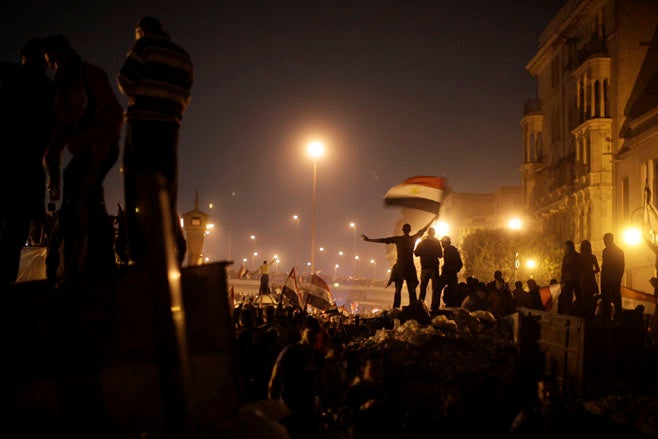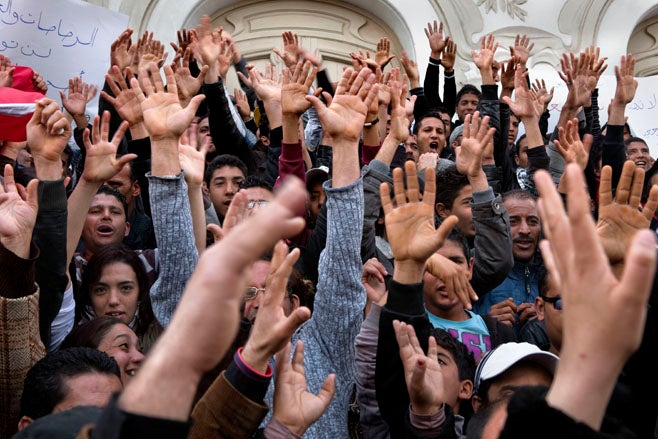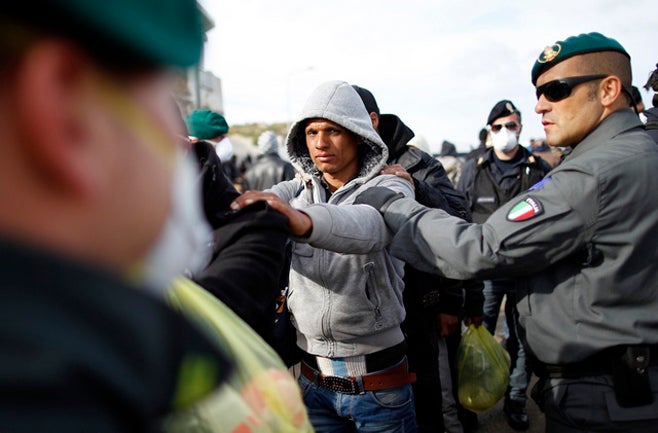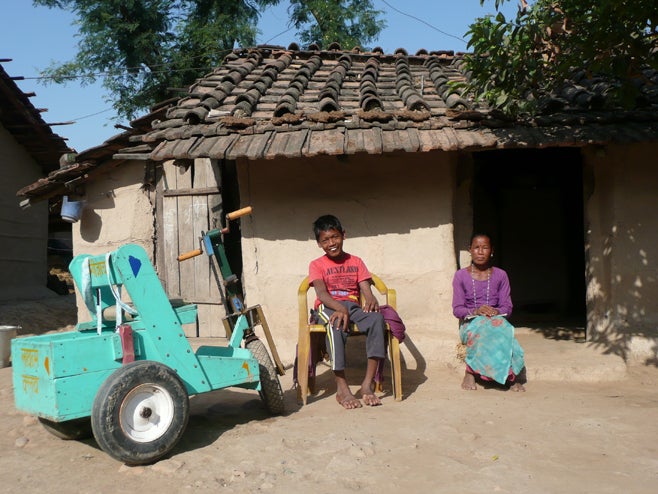Armed conflict with the Taliban and other insurgents escalated in 2011, but Afghanistan’s military allies made it clear they were intent on withdrawing troops as soon as possible, with a deadline for Afghan national security forces to take over from international forces by the end of 2014.
Rising civilian casualties, increased use of “night raids” by the International Security Assistance Force (ISAF), and abuses by insurgents and government-backed militias widened the impact of the war on ordinary Afghans. Stability was further undermined by a political crisis following parliamentary elections and panic caused by the near-collapse of the country’s largest private bank.
The Afghan government continues to give free rein to well-known warlords and human rights abusers as well as corrupt politicians and businesspeople, further eroding public support. And it has done far too little to address longstanding torture and abuse in prisons and widespread violations of women’s rights.
In 2011 support grew within the government and with its international partners for a negotiated peace agreement with the Taliban, given waning international willingness to continue combat operations. However, moves toward a peace agreement proved difficult with several false starts, the killing by the Taliban of a key government negotiator, pressure from Pakistan for a key role in the process, and lack of trust and differing priorities among the government and its international partners.
The possibility of an agreement raised fears (and, reportedly, re-arming) among non-Pashtun communities, who are concerned about an alliance between the government and the Taliban. It also renewed grave concerns that human rights, especially women’s rights, would be bargained away in the negotiation process.
Flawed parliamentary elections in September 2010 led to fallout that, in 2011, threatened to seriously destabilize the country. Following the certification of election results by the Independent Election Commission (IEC), President Hamid Karzai took the unprecedented step of creating a special court to review the results. After street protests in Kabul and eight months during which parliament was immobilized by uncertainty, the special court disqualified 62 members of parliament out of 249 seats. A compromise in September 2011 resulted in nine members of parliament being removed.
The Armed Conflict
The armed conflict escalated in 2011. The Afghan NGO Security Office (ANSO) reported that opposition attacks increased to 40 a day in the first six months of the year, up 119 percent since 2009 and 42 percent since 2010. ANSO also reported a 73 percent increase since 2010 in attacks against aid workers, which included a fatal mob attack—sparked by the burning of the Koran by an American pastor in Florida—against a United Nations office in the city of Mazar-e-Sharif. Insurgent attacks reached previously secure areas including Parwan and Bamiyan as the war spread to many new parts of the country.
Civilian casualties rose again, with the UN Assistance Mission in Afghanistan (UNAMA) recording 1,462 conflict-related civilian deaths in the first six months of the year, a 15 percent increase since 2010. Some 80 percent were attributed to anti-government forces, most commonly caused by improvised explosive devices (IEDs). Most IEDs that the ISAF encounters are victim-activated devices detonated by pressure plates, effectively antipersonnel landmines, which the 1997 Mine Ban Treaty—to which Afghanistan is a party—prohibits.
The death of 368 civilians in May was the highest monthly toll since UNAMA began tracking figures in 2007. The use of “night raids” by international forces—nighttime snatch operations against suspected insurgents widely despised by Afghans because of their infringement on family life—increased to a reported 300 per month. While pro-government forces succeeded in reducing the number of civilian deaths directly caused by their operations, more could still be done to protect civilian lives.
The NATO mission aimed to train a 134,000-strong police force and 171,600 soldiers by October 2011 to replace foreign forces. But the effort faces serious challenges, including attrition, insurgent infiltration, and illiteracy and substance abuse among recruits. In multiple incidents, trainees attacked and killed their international mentors. One in seven Afghan soldiers, a total of 24,000, deserted in the first six months of the year, twice as many as in 2010.There are concerns that the buildup of the armed forces is moving too fast for necessary training and vetting, and that the size of the force will be financially unsustainable.
In an effort to combat insurgency the Afghan government continues to arm and provide money, with little oversight, to militias in the north that have been implicated in killings, rape, and forcible collection of illegal taxes. As part of its exit strategy, the United States is backing “Afghan Local Police” (ALP), village-based defense forces trained and mentored primarily by US Special Forces, which have been created since 2010 in parts of the country with limited police and military presence. In its first year ALP units were implicated—with few consequences for perpetrators—in killings, abductions, illegal raids, and beatings, raising serious questions about government and international efforts to vet, train, and hold these forces accountable.
A campaign of assassinations of public figures by the Taliban in the north and the south seeks to destabilize the government. Prominent figures killed included the mayor of Kandahar, Ghulam Haidar Hameedi; a northern police commander, Gen. Daud Daud; and President Karzai’s half-brother, Ahmad Wali Karzai, a key southern powerbroker. Shifting power structures have led to the appointment of individuals implicated in serious human rights abuses, including Matiullah Khan as Uruzgan police chief and Abdur Rezaq Razziq as Kandahar police chief. The Taliban and other insurgent groups continue to target schools, especially those for girls. The Taliban also use children, some as young as eight, as suicide bombers.
Detainee Transfers
Torture and abuse of detainees in Afghan jails in 2011 led the ISAF to temporarily suspend the transfer of prisoners in eight provinces. Abuses in these jails documented by the UN Assistance Mission in Afghanistan include beatings, application of electric shock, threats of sexual assault, stress positions, removal of toenails, twisting and wrenching of genitals, and hanging detainees by their wrists. Inadequate due process protections for detainees held within the parallel US-administered system and for those prosecuted under Afghan law following US detention also continue to be a serious concern.
Violence and Discrimination against Women and Girls
Attacks and threats against women continue, frequently focusing on women in public life, school girls, and the staff of girls’ schools. The incarceration of women and girls for “moral crimes” such as running away from home—even when doing so is not prohibited by statutory law—also continues to be a major concern, with an estimated half of the approximately 700 women and girls in jail and prison facing such charges.
A government-proposed regulation in 2011 would have prevented NGOs from independently operating shelters for women and jeopardized the existence of Afghanistan’s few existing shelters. Afghanistan at present has 14 shelters, each able to house an average of around 20 to 25 women and their children. This does not meet even a small fraction of the need in a country where an estimated 70 to 80 percent of marriages are forced and 87 percent of women face at least one form of physical, sexual, or psychological violence or forced marriage in their lifetimes. Although the regulation was significantly improved following strong domestic and international criticism, it exemplifies the hostility felt by many parts of Afghan society, including within the government, to women’s autonomy and ability to protect themselves from abuse and forced marriage.
Weak Rule of Law and Endemic Corruption
Afghanistan’s justice system remains weak and compromised, and a large proportion of the population relies instead on traditional justice mechanisms, and sometimes Taliban courts, for dispute resolution. Human rights abuses are endemic within the traditional justice system, with many practices persisting despite being outlawed. For exampleBaad, where a family gives a girl to another family as compensation for a wrong, continues even though it is banned by the 2009 Law on Elimination of Violence against Women.
Prison overcrowding is extreme and increasing at an alarming rate, with the number of prisoners increasing from 600 in 2001 to 19,000 in 2011. Following the escape of 476 prisoners from Sarposa Prison in Kandahar, the government ordered the transfer of responsibility for prisons from the Ministry of Justice to the Ministry of Interior, despite international concerns that doing so would increase the likelihood of abusive interrogation and lead to gaps in training, management, and oversight.
Key International Actors
For many international actors, particularly the US, a desire to bow out of what increasingly appears to be an unwinnable war has entirely overshadowed concerns about human rights. Activists’ demands that negotiations with the Taliban not imperil human rights, especially women’s rights, have been met by bland international assurances that any agreement would require the Taliban to commit to respecting the constitution. Such promises are of little use when many in Afghanistan, both government and insurgent supporters, interpret the constitution as elevating religious principles over international human rights obligations. The Taliban has in practice shown no willingness to respect international human rights laws and norms.
Internationally supported efforts to promote human rights, civil society, education, rule of law, governance, and access to health care are imperiled by declining international aid. Aid budgets are expected to decline precipitously in 2012. The looming date of 2014 for withdrawal of most international troops—which is advancing against a backdrop of rising civilian casualties particularly from insurgent attacks, increased use of “night raids,” abuses by armed groups, and persistent human rights violations—begs the question of exactly what kind of Afghanistan the troops will be leaving behind.






